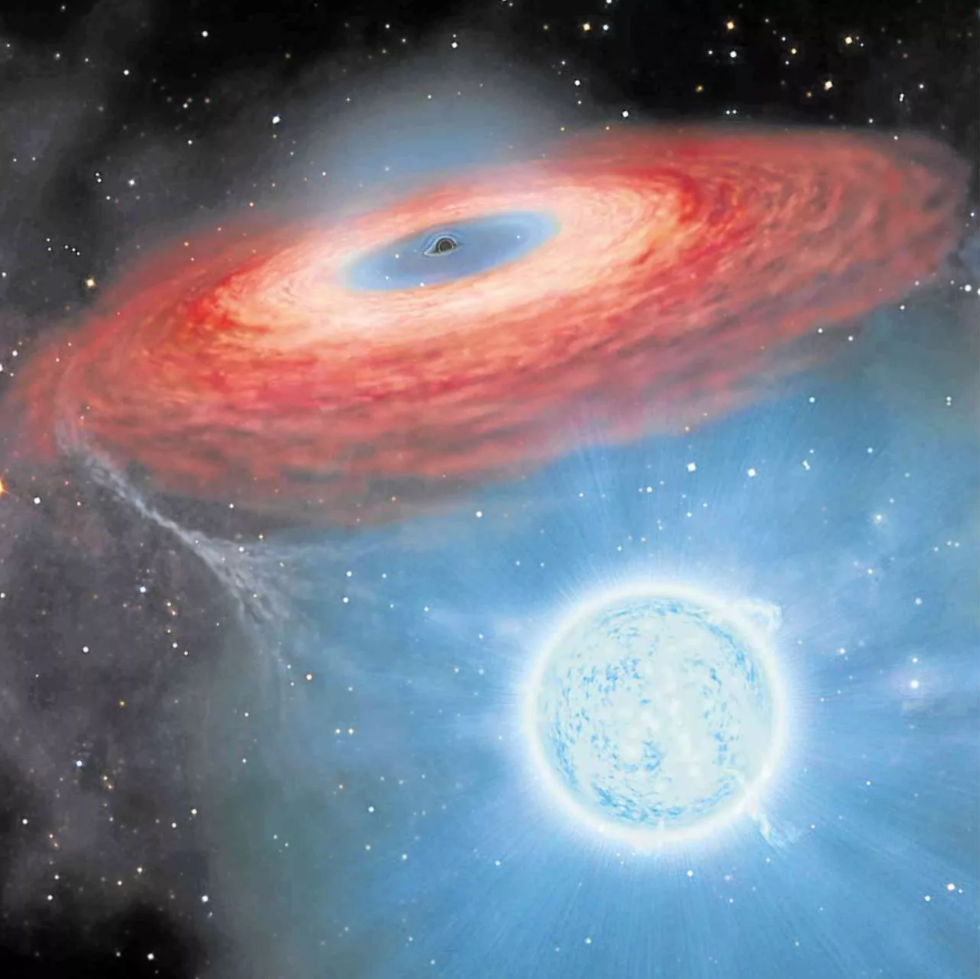 An illustration of the LB-1 black hole. Image: Beijing Planetarium/Chinese Academy of Sciences
An illustration of the LB-1 black hole. Image: Beijing Planetarium/Chinese Academy of Sciences
Astronomers in China discover a wide black hole binary system in the Milky Way, the largest of which has a stellar mass of 70x that of our Sun. The black hole system is located approximately 15,000 light-years from Earth.
The calculations of the masses of these black holes were made with radial-velocity measurements taken over a time period of two years. The smaller black hole of the binary system has a stellar mess of 8x that of our Sun.
"Black holes of such mass should not even exist in our galaxy, according to most of the current models of stellar evolution," astronomer Jifeng Liu said in a statement.
So far, researchers have arrived at two distinct kinds of black holes. The more common ones are stellar black holes, which can be up to 20 times as massive as our Sun (the oddity in question is 70x the mass of our Sun). These can form when the core of a massive star collapses in on itself.
The second kind of black hole, supermassive black holes, are at least a million times bigger than the Sun. Their origins? Unknown. Researchers think that the typical star in the Milky Way will shed most of their gas through stellar wind — naturally preventing the formation of a black hole as massive as LB-1.
Read paper about this discovery:
https://arxiv.org/abs/1911.11989
Additional resources:
https://www.nature.com/articles/s41586-019-1766-2
https://www.firstpost.com/tech/science/astronomers-spot-stellar-black-hole-so-massive-it-shouldnt-exist-7714651.html
https://www.washingtonpost.com/science/2019/11/29/scientists-find-monster-black-hole-so-big-they-didnt-think-it-was-possible/
